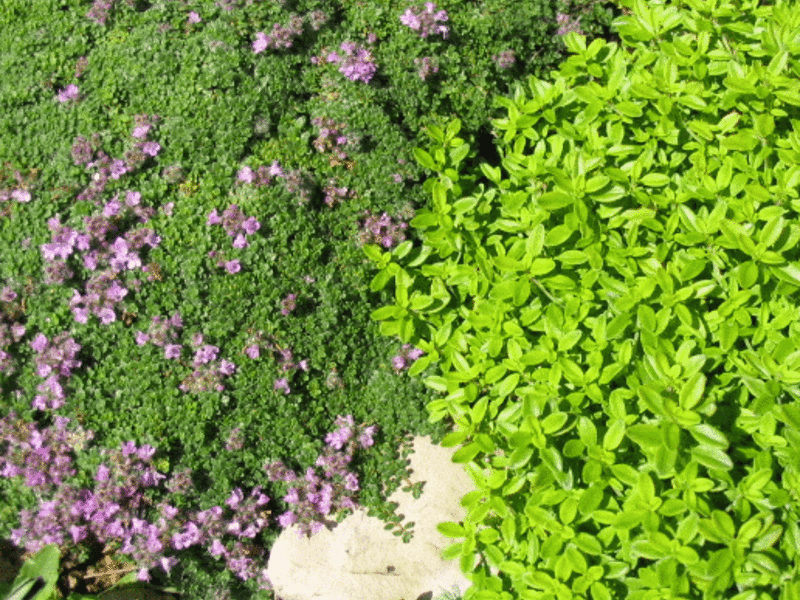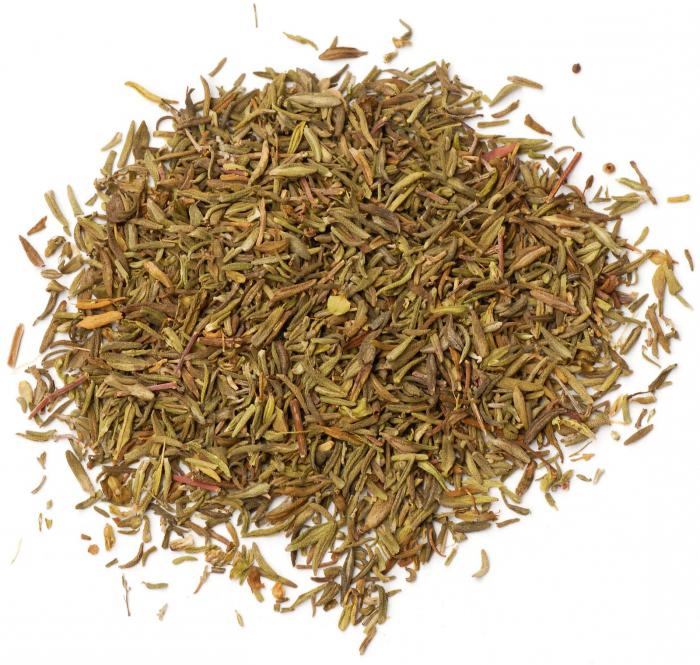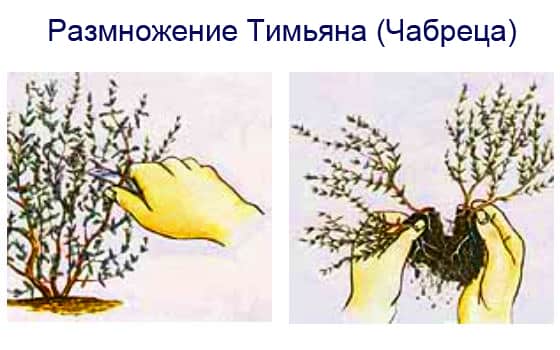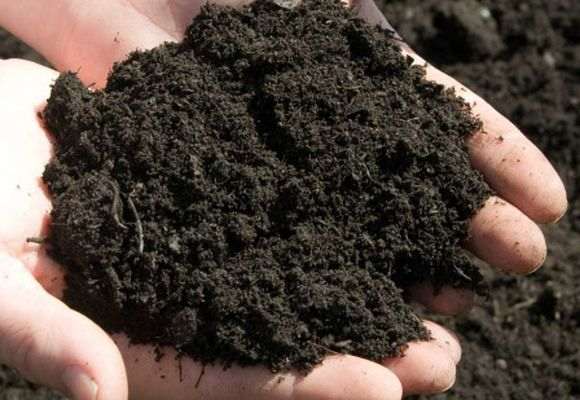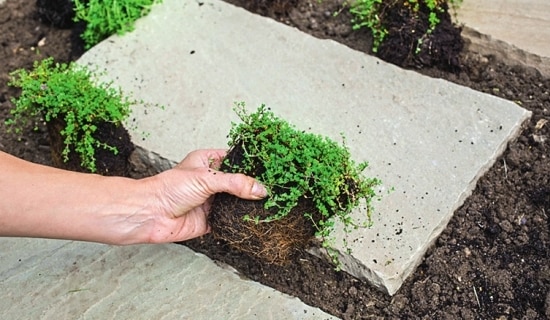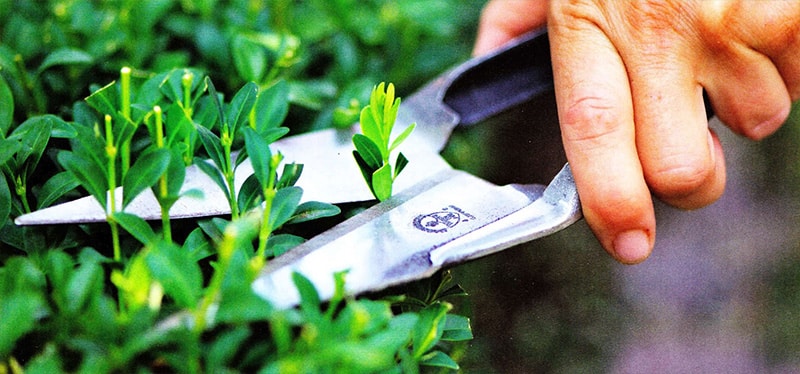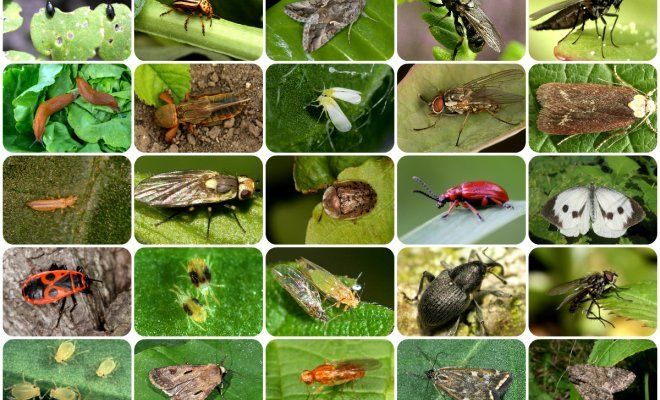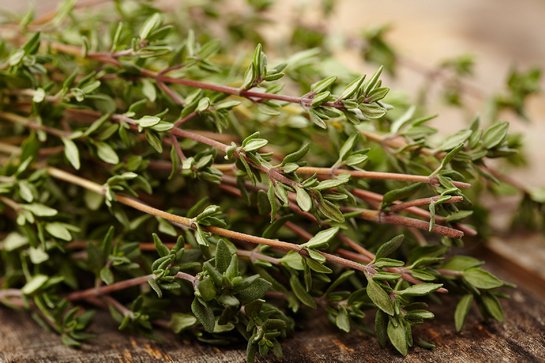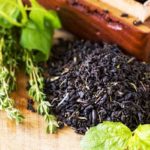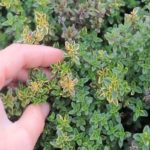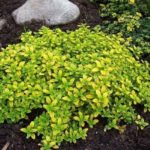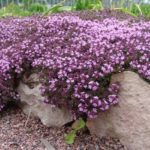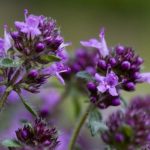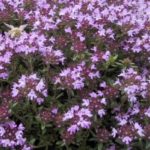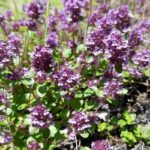Gardeners have long been attracted to low, groundcover grass, spreading out in a flowering carpet and exuding a unique aroma. However, growing thyme is not limited to the desire to create a landscape design. This plant, popularly called thyme, has long attracted attention for its healing properties and ability to add a fragrant touch to meat dishes, soups, salads, and marinades. In Ancient Egypt, thyme was used in ritual ceremonies.
- Thyme: plant description
- Main types of thyme
- Methods of growing in the country
- Thyme from seeds
- Thyme from cuttings
- Planting thyme
- Selection of location and soil
- When and how to plant thyme?
- Rules for caring for thyme
- Features of watering
- Plant nutrition
- Thyme pruning
- Diseases and pests
- How does the plant overwinter?
- Collection and storage
Thyme: plant description
Thyme belongs to an extensive genus of over 400 varieties and is a low-growing perennial. Subshrub height: 5–35 cm. Lignified brown stems are covered with hard, oppositely arranged leaves. The color, shape and size of which are determined by the type of plant. Adventitious roots. Erect, villous peduncles form inflorescences of small flowers in a wide range of colors. Thyme blooms from June to August, filling the air with a warm, spicy aroma.
Main types of thyme
Among the huge number of thyme species, the following stand out:
- Ordinary. Came to us from southern France and Spain. It is distinguished by small, lanceolate leaves of a dark green color and pale lilac flowers.
- Creeping. Mediterranean species with leathery leaves of various colors. The purple flowers have a beautiful pink tint. This thyme is resistant to frost and drought and is considered an excellent honey plant.
- Lemon-smelling. A hybrid species from southern France, so named because of its tart lemony smell. Yellow leaves turn green over time. The flowers are a pleasant pink color. Does not tolerate frost well, requires shelter during the cold season and regular pruning.
- Vegetable Honey. Heavily leafy, perennial hybrid is resistant to drought and cold, and produces high yields. A wonderful honey plant and garden decoration. Used fresh and dried, in cooking and folk medicine.
Methods of growing in the country
Growing thyme in your garden is not difficult. To do this, prepare seeds, cuttings or divide the bush. It is necessary to take into account active propagation by self-seeding, as a result of which, over time, it will be necessary to limit the space.
Thyme from seeds
Sowing seed material is possible in an area that has been thoroughly cleared of weeds. Since small seeds hatch within a month and develop very slowly, weeds interfere with the process. Therefore, it is preferable to grow thyme using seedlings. To do this, at the beginning of spring, a soil mixture of sand and peat is prepared, which is poured into boxes, trays or containers. The sown seeds are kept under polyethylene or glass until sprouts appear. Seedlings require regular moderate watering and good lighting. After 3–4 weeks, the plants, which look stronger, are hardened off in the open air for two weeks, after which they are planted in a permanent place of growth.
Thyme from cuttings
In summer, green cuttings are used to propagate thyme. This method is characterized by successful rooting. The procedure is carried out before flowering begins. The upper parts of the stems should be cut to a height of 10 cm, placed in river sand and covered with a piece of polyethylene. A month later, the rooted specimens are planted in open ground.
When dividing the bush, the base is broken and the roots are carefully untangled.
It is recommended to cover the plots with a glass jar for a week in order to increase survival rate.
Planting thyme
Growing a hardy and unpretentious subshrub will not cause trouble for the gardener. Bogorodskaya grass adapts to the proposed climatic conditions and, with proper treatment, responds by forming a spherical bush and increasing its useful mass.
Selection of location and soil
To plant thyme, you need to choose a place in the garden that is open to sunlight, but without drafts. The soil should be neutral and well drained. Heavy, clayey and highly moist soils require the addition of sand.In order for the grass to feel good in open ground, acidification must not be allowed, for which chalk or lime is added.
It is necessary to take into account the overall design of the garden so that the luxurious interweaving of thyme fits harmoniously into the landscape.
When and how to plant thyme?
Thyme seeds are planted in autumn and spring after soaking in warm water for 12 hours. The seedlings are thinned out, maintaining an interval of 30 cm.
It is best to plant seedlings after frost ends, on a warm, sunny day. A spacious hole is being built. The seedling is removed from the container and placed in a mixture of soil and sand. The surface of the soil is compacted, after which the plant is watered. When propagated by cuttings, planting is carried out in August.
When planting thyme in open ground with seeds, the subshrub will flower in its second year of life.
Rules for caring for thyme
Due to the unpretentiousness of the plant, there is no need to create special conditions for cultivation. Agrotechnical measures include watering, weeding, and loosening.
Features of watering
It is easier for thyme to withstand drought than waterlogging, which leads to rotting of the roots. Therefore, watering is indicated only in case of a prolonged dry period. On rainy days, the soil around the seedling is mulched with gravel, crushed stone, and sawdust.
Plant nutrition
Growing thyme does not require large amounts of fertilizer. If you fertilize the soil with humus before planting, this will be enough for the whole year ahead. Then, annual feeding with liquid mineral fertilizers is carried out in late spring or early summer.
It is advisable to use wood ash, which enriches the soil with minerals and reduces acidity.
Thyme pruning
Thyme pruning includes: shortening shoots and removing faded inflorescences.The shoots are trimmed to two-thirds of the length of the stem; this will maintain an attractive appearance and provide the plant with solidity. It is not necessary to prune bushes for the winter.
Pinching the stem will provide thickness to the adult thyme.
Diseases and pests
The aromatic substances released by thyme in large quantities serve as good protection against pests. Violation of the rules of care can provoke an insect attack.
Significant damage to the plant is caused by:
- Meadow moths attacking stems and leaves. Activated on warm nights. Treatment with insecticides helps.
- Sand sluggers completely destroy above-ground organs. They are fought with poisoned baits.
- Weevils. They feed on young shoots and flower buds. Plantings can be protected by treating them with insecticides or installing baits with toxic drugs.
- Aphids attack the stems and leaves of thyme. Does not tolerate insecticides.
Preventive measures to protect against pests and parasites include: regular loosening, timely removal of weeds, deep digging and application of alkaline fertilizers.
How does the plant overwinter?
Wintering thyme rarely brings problems to the owners of summer cottages, unless there is stagnation of melt water in the place of growth. The winter hardiness of the subshrub is at a high level. But, if a gardener is concerned about planting fragrant grass and is wondering how to protect the plants from frost, it is suggested to use leaves that have fallen from trees and shrubs, spruce branches or peat. This is what they do in the event of a winter with little snow.
Collection and storage
Thyme grass is cut for food and medicinal purposes twice during the growing season.In June, flowering plants contain the maximum amount of flavoring and healing substances; at this time, harvesting is especially valuable. Secondary cutting of green mass is scheduled for the end of August.
The days of collecting grass that fall on church holidays: Trinity and Dormition of the Virgin Mary are especially revered. There is a popular belief that these preparations increase the positive properties many times over.
The weak, shallow root system of thyme does not tolerate hand picking. The only correct method for harvesting aromatic herbs is cutting.
The raw materials should be dried tied in bundles, hung in a dry place, protected from direct sunlight. A small amount of thyme can be dried by spreading it in a thin layer on paper sheets at home or in a room sheltered from the sun and rain. An indispensable condition: organization of ventilation.
Thyme is stored in crushed or grated form, the stems are removed. Ready to use, the powder is poured into hermetically sealed containers, such as coffee cans. The dishes should be placed in a dark place, for example, in a kitchen cabinet. Thick paper bags and canvas bags are suitable for dried herbs, but they lose the aroma of essential oils. The properties of the plant last for two years.
Growing thyme is justified in several cases: for use in cooking, decorating and flavoring the garden, and for medicinal purposes. An unpretentious crop that can grow in harsh conditions that are not suitable for other plants. Growing thyme is not difficult due to its resistance to changing weather conditions and high survival rate. With proper care, the plant grows quickly and delights with abundant and long-lasting flowering.

